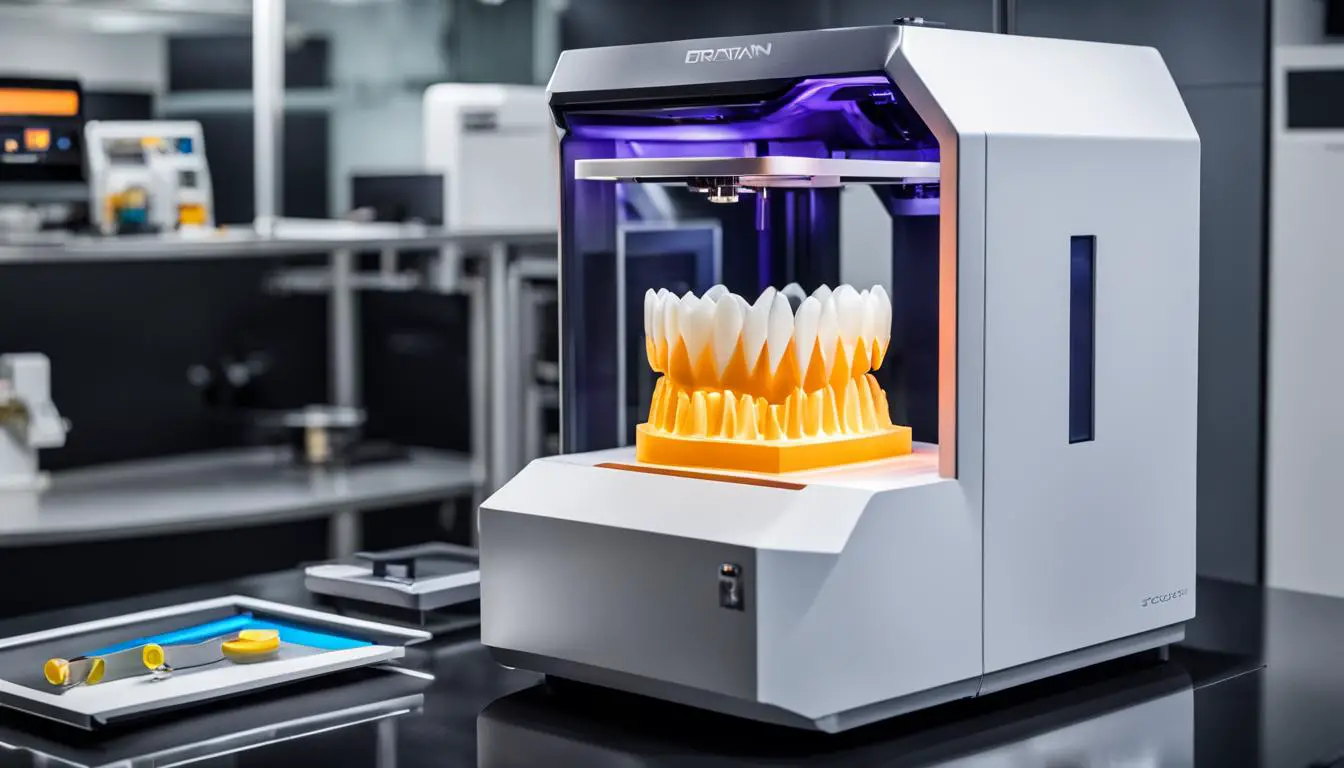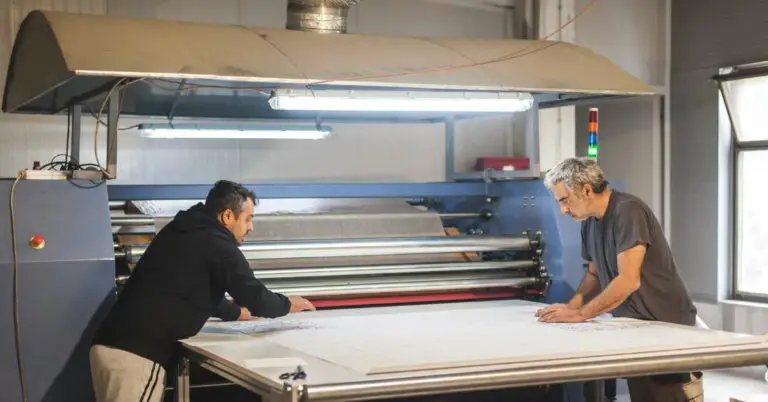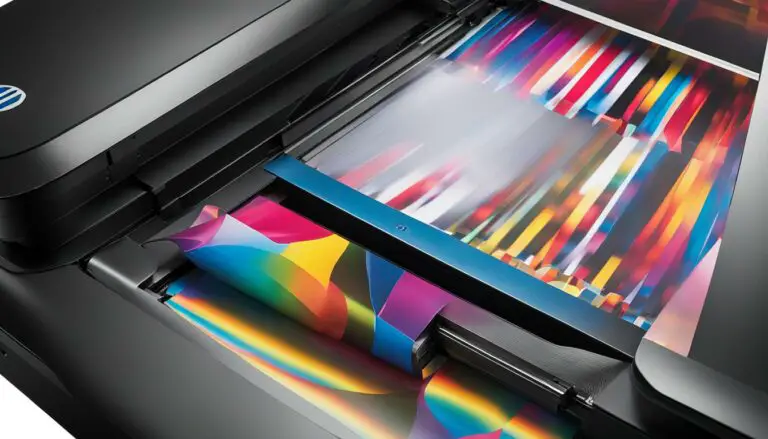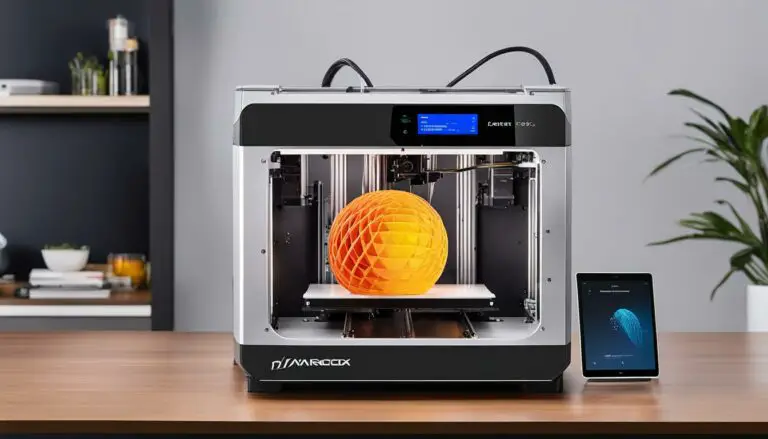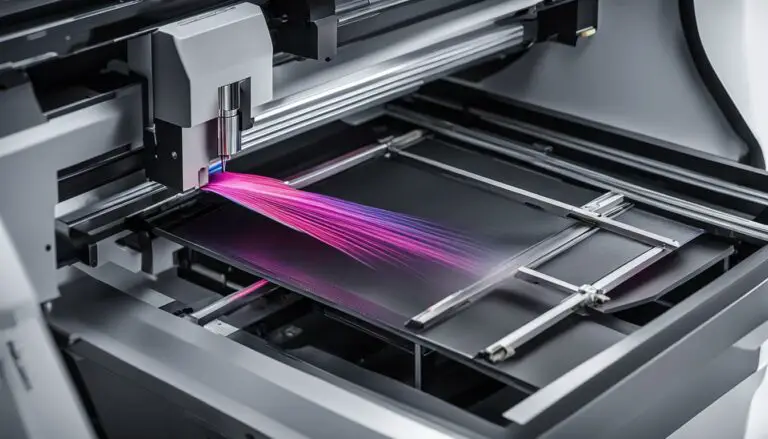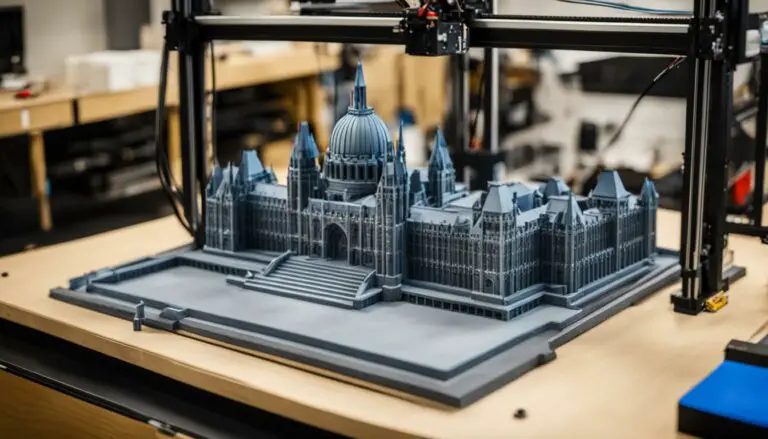The Best 3D Dental Printers for Your Practice
Originally posted on November 17, 2023 @ 1:32 pm
The emergence of 3D printing in the dental field has revolutionized the way dental services are provided, providing a vast range of possibilities for both dental professionals and laboratories. When deciding on the most suitable 3D printer for your practice, it is essential to take into account elements like precision, reliability, and suitability for use on living tissues.
Most dental 3D printers utilize Stereolithography (SLA) technology, which ensures high precision and surface quality. However, with numerous options available, it’s essential to assess your unique requirements to find the best 3D printer that fits your needs.
Key Takeaways:
- Consider the accuracy, consistency, and biocompatibility requirements for your dental practice.
- SLA technology offers high precision and surface quality in dental 3D printers.
- Assess your specific requirements to choose the best 3D printer for your dental practice.
Key Considerations for Dental 3D Printing
When venturing into the world of dental 3D printing, there are several key considerations that can help you make an informed decision. Understanding the unique requirements of the dental industry and digital workflows is crucial in selecting the right dental 3D printer for your practice.
One important factor to keep in mind is biocompatible validation. Dental 3D printers must meet strict standards for biocompatibility to ensure the safety and well-being of patients. This validation ensures that the materials used in the printing process are safe to be used in the oral cavity.
Another consideration is the choice of technology. The two common technologies used in dental 3D printing are vat photopolymerization, such as SLA, and dental jetting technologies. Vat photopolymerization uses liquid resin that solidifies when exposed to UV light, while dental jetting technologies use nozzle-based inkjet printing. Each technology has its own advantages and limitations, and understanding their differences can help you choose the most suitable option for your practice.
Biocompatible Validation Standards
Dental 3D printers must adhere to biocompatible validation standards to ensure patient safety and well-being. These standards verify that the materials used in the printing process are safe to be used in the oral cavity. It is essential to choose a dental 3D printer that has been validated and certified for biocompatibility to guarantee the highest level of patient care.
Choosing the Right Technology
Understanding the different dental 3D printing technologies available is crucial in selecting the right printer for your practice. Vat photopolymerization, such as SLA, offers high precision and surface quality, making it suitable for a wide range of dental applications. Dental jetting technologies, on the other hand, provide nozzle-based inkjet printing, allowing for faster printing speeds and the use of multiple materials. Consider your specific needs and the types of dental applications you plan to produce when choosing the appropriate technology.
Integration with Digital Workflows
Integrating a dental 3D printer into your existing digital workflows is essential for a seamless and efficient workflow. Look for a printer that is compatible with popular dental CAD software and other digital tools used in your practice. This integration ensures a smooth transition from digital design to physical models, saving time and improving overall productivity.
Table: Comparison of Dental 3D Printing Technologies
| Technology | Advantages | Limitations |
|---|---|---|
| Vat Photopolymerization (SLA) | – High precision and surface quality – Wide range of materials available – Suitable for intricate dental applications |
– Slower printing speed compared to other technologies – Limited build volume |
| Dental Jetting Technologies | – Faster printing speed – Ability to use multiple materials simultaneously – Larger build volume |
– Lower resolution compared to vat photopolymerization – Limited material options |
By considering these key factors, you can make an informed decision when selecting a dental 3D printer for your practice. From biocompatible validation to choosing the right technology and integrating it into your digital workflows, each consideration plays a crucial role in ensuring the success and efficiency of your dental 3D printing endeavors. Take the time to evaluate your specific needs and explore the options available to find the best fit for your practice.
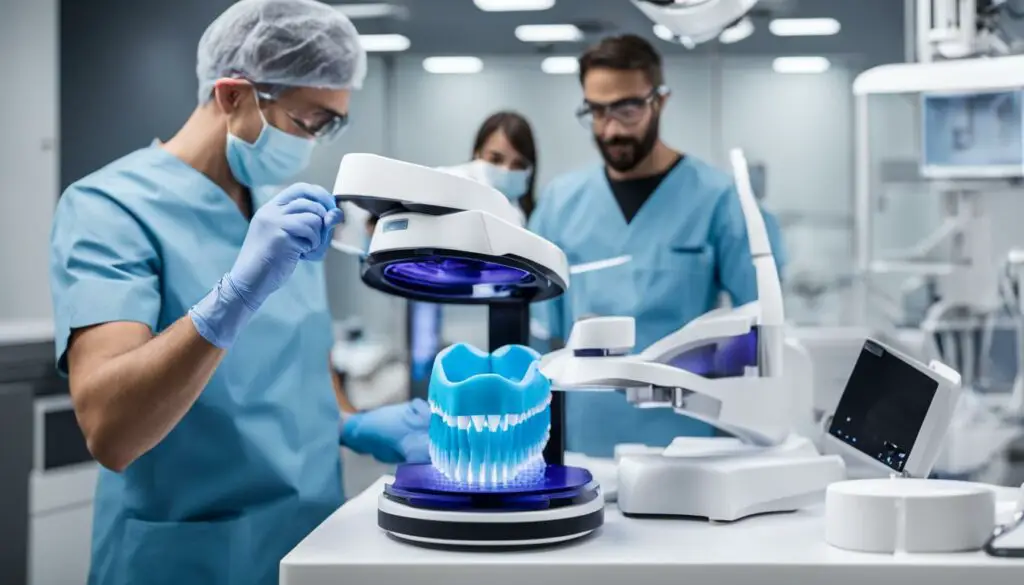
Top Dental 3D Printing Solutions
When it comes to dental 3D printing, there are several top solutions available that cater specifically to dental practices. These solutions provide a polished ecosystem and workflow designed to meet the unique needs of dental applications. Here are some key features to look for when choosing a dental 3D printing solution:
- Technical support: Ensure that the solution provider offers reliable technical support to assist you with any issues or questions that may arise during the printing process. Having access to knowledgeable support can help you minimize downtime and maximize productivity.
- Continuing education: Look for a solution that provides ongoing training and education to help you stay up-to-date with the latest advancements in dental 3D printing. This can include webinars, workshops, and online resources that enhance your skills and knowledge.
- Material and resin portfolio: A comprehensive range of materials and resins is essential for producing high-quality dental appliances. Ensure that the solution you choose offers a diverse selection of materials that are compatible with your desired applications.
- Open 3D printing platform: An open platform allows you to work with different file formats and collaborate with other dental professionals. This flexibility enables seamless integration with your existing digital workflows and ensures compatibility with various CAD software.
By selecting a dental 3D printing solution that offers these features, you can streamline your workflow, improve efficiency, and deliver exceptional results for your patients.
“Choosing a dental 3D printing solution with a polished ecosystem and workflow can greatly enhance the capabilities of your dental practice-based 3D printing. The right solution will not only provide technical support and a diverse material portfolio but also offer ongoing education and an open platform for seamless integration with your existing digital workflows.”
Ultimately, the goal is to find a dental 3D printing solution that aligns with your practice’s specific needs and goals. Consider factors such as technical support, material options, and workflow integration when making your decision. With the right solution in place, you can take advantage of the many benefits that dental 3D printing has to offer, from increased efficiency to superior quality dental appliances.
| Feature | Importance |
|---|---|
| Technical Support | High |
| Continuing Education | High |
| Material and Resin Portfolio | High |
| Open 3D Printing Platform | Medium |
Preparing Your Practice for Dental 3D Printing
Before implementing dental 3D printing in your practice, there are several key preparations that need to be made. These preparations will ensure a smooth transition and successful integration of this innovative technology. Here are the essential steps:
1. Capture Digital Impressions
To fully utilize 3D printing in your practice, you need to have the capability to capture digital impressions. This can be done using intraoral scanners that create highly accurate digital models of patients’ teeth and gums. Digital impressions are essential for designing and fabricating 3D-printable models and appliances with precision.
2. Utilize CBCT Data
CBCT (Cone Beam Computed Tomography) scans provide comprehensive 3D images of patients’ oral structures, including bone, teeth, and soft tissues. These scans are invaluable for planning implant placements, analyzing complex cases, and creating surgical guides. Incorporating CBCT data into your 3D printing workflow allows for more accurate and predictable treatment outcomes.
3. Invest in Computer-Aided Design (CAD) Software
Computer-Aided Design (CAD) software is an essential tool for designing 3D-printable models and appliances. It allows you to create custom restorations, orthodontic aligners, surgical guides, and other dental appliances with precision. Invest in user-friendly CAD software that integrates seamlessly with your 3D printer and offers a wide range of design capabilities.
4. Assess Team Capacity and Physical Space
Before introducing dental 3D printing, assess your team’s capacity and ensure they are educated and prepared for the 3D printing process. Provide training and ongoing support to ensure they can effectively utilize the technology. Additionally, consider the physical space required for the 3D printer, post-processing equipment, and storage of materials and models.
5. Acquire Post-Processing Equipment and Safety Precautions
Post-processing is a crucial step in the dental 3D printing workflow. Invest in post-processing equipment such as UV curing units, sandblasters, and polishing tools to ensure the final dental appliances meet high standards of aesthetics and functionality. Implement safety precautions to protect your team from potential hazards associated with handling UV-sensitive materials and chemicals.
6. Regular Troubleshooting and Calibration
Maintaining the quality and consistency of 3D-printed appliances requires regular troubleshooting and calibration. Familiarize yourself with the troubleshooting procedures provided by the manufacturer and establish a calibration schedule to ensure optimal performance of your 3D printer. This will help prevent potential printing errors and ensure accurate and reliable results.
7. Stay Up-to-Date with Advancements
The field of dental 3D printing is rapidly evolving, with new technologies and materials constantly being introduced. Stay up-to-date with the latest advancements by attending conferences, seminars, and webinars. Engage in continuing education to expand your knowledge and skills in dental 3D printing, enabling you to offer the best possible care to your patients.
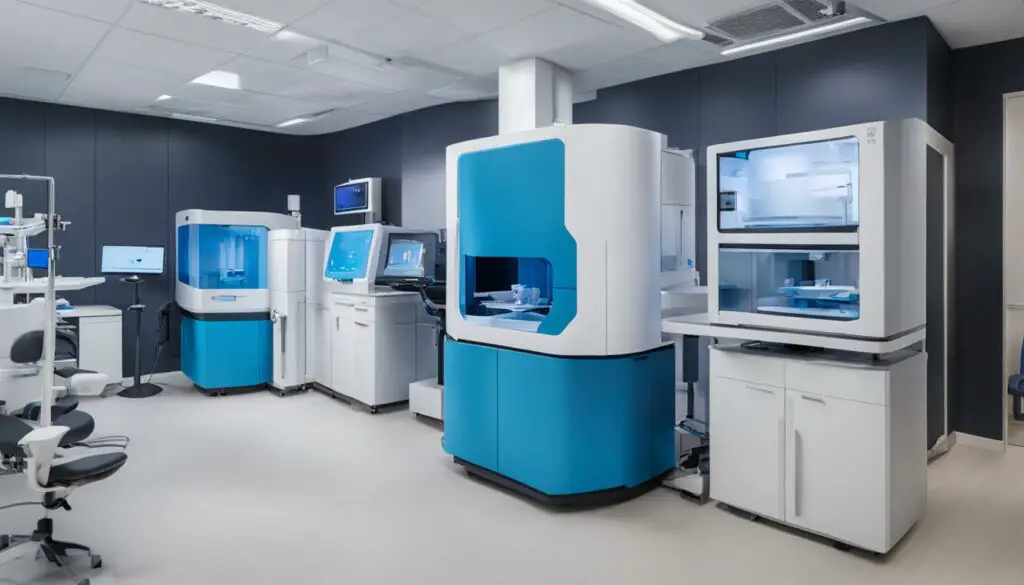
By following these steps and adequately preparing your practice for dental 3D printing, you can unlock the full potential of this innovative technology. From capturing digital impressions to acquiring the necessary equipment, your practice will be well-equipped to leverage the benefits of dental 3D printing and provide high-quality, precise dental appliances to your patients.
The Benefits of Dental 3D Printing
Dental 3D printing offers numerous benefits compared to traditional methods of fabricating dental appliances. The convenience provided by this technology is unmatched. With 3D scanning, there is no longer a need for messy impressions, making the process more comfortable and convenient for patients.
Time-saving is another significant advantage of dental 3D printing. By producing lab work on-demand, dental practices can save valuable time and avoid relying on external laboratory workloads. This means faster turnaround times and increased productivity for your practice.
One of the most remarkable benefits of dental 3D printing is the advance preview of the final restoration. Dentists can make alterations and ensure the perfect fit and aesthetics before fabrication. This not only improves patient satisfaction but also reduces the need for costly and time-consuming adjustments.
“Dental 3D printing technology ensures high levels of accuracy and precision in dental appliances. The automated nature of the process eliminates human error, resulting in consistently high-quality prints with fewer defects.”
The accuracy and precision achieved in dental 3D printing are unmatched. The technology ensures that dental appliances are fabricated with utmost precision, resulting in superior fit and functionality. Additionally, 3D-printed restorations exhibit fewer defects, making them less prone to cracking or breaking. This enhances the longevity and durability of the appliances, providing long-term benefits for both patients and dental practices.
Overall, the benefits of dental 3D printing are undeniable. The convenience, time-saving capabilities, advance preview options, and superior accuracy make it a game-changer for the dental industry. By embracing this technology, dental practices can provide better patient care, improve workflow efficiency, and enhance their reputation as innovative leaders in the field.
| Benefits of Dental 3D Printing |
|---|
| Convenience |
| Time-saving |
| Advance preview of final restoration |
| Accuracy and precision |
| Fewer defects |
Conclusion: Choosing the Best 3D Dental Printer for Your Practice
When it comes to dental 3D printing, selecting the right printer for your practice is essential. You need a printer that delivers precision and accuracy to ensure the fabrication of high-quality dental appliances. Ease of use is also crucial, as you want a printer that integrates seamlessly into your workflow without causing unnecessary complexity.
Reliability is key when investing in a dental 3D printer. You want a machine that consistently produces consistent and reliable results, reducing the chances of disruptions in your practice. Consider the track record and reputation of the printer manufacturer to ensure you choose a reliable option.
Of course, cost is a significant factor to consider as well. Evaluate not only the upfront cost of the printer but also the maintenance and material costs associated with it. Understanding the total cost of ownership will help you make a well-informed decision that aligns with your budget.
By carefully evaluating these factors – precision and accuracy, ease of use, reliability, and cost – you can choose the best 3D dental printer for your practice. With the right printer in your office, you’ll be able to enhance your capabilities in providing top-notch dental appliances and take advantage of the many benefits that dental 3D printing has to offer.
FAQ
What technology is commonly used in dental 3D printers?
The majority of dental 3D printers use SLA (Stereolithography) technology, which offers high precision and surface quality. Dental jetting technologies, which utilize nozzle-based inkjet printing, are also available.
What are the key features to look for in dental 3D printing solutions?
Key features to look for include technical support, continuing education, a good material and resin portfolio, and an open 3D printing platform.
What preparations are necessary before implementing dental 3D printing?
Before implementing dental 3D printing, you will need to have the capability to capture digital impressions and potentially CBCT data. Computer-aided design (CAD) software is also essential.
What are the benefits of dental 3D printing?
Dental 3D printing eliminates the need for messy impressions, saves time, allows for an advance preview of the final restoration, ensures high levels of accuracy and precision, and produces restorations that are less prone to cracking or breaking.
How do I choose the best 3D dental printer for my practice?
When choosing a 3D dental printer, consider factors such as precision and accuracy, ease of use, reliability, and cost. Evaluate these factors and determine your specific requirements to select the best printer for your practice.

